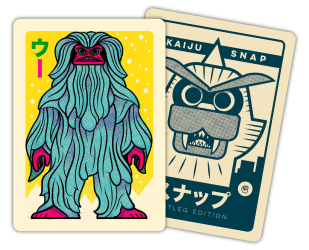Personalised Playing Cards

Jump To Section
How to create your own card game
Creating your own card game is an exciting journey, blending creativity, strategy, and a touch of magic. From one-on-one meetings with our sales team to working closely with one of our fantastic designers from our in-house artwork studio, we have the expertise and resources to push your card game to its fullest potential.
- 1. Conceptualise Your Game's Theme and Objective:
- • Start with a compelling theme. Whether it’s fantasy, history, or something entirely unique, your theme will be the soul of your game.
- • Define the objective. What is the goal for the players? Is it to accumulate points, complete a quest, or perhaps outwit opponents?
- 2. Design the Game Mechanics:
- • Decide on the type of game: Is it a strategy game, a game of chance, or a mix of both?
- • Create rules that are challenging yet enjoyable. Balance is key; too complex, and players may be discouraged; too simple, and they might lose interest.
- 3. Develop the Cards
- • Design your cards with both aesthetics and functionality in mind. Each card should be visually appealing and clearly convey its purpose.
- • Consider the number of cards and how they interact with each other. This will affect the game’s pace and style.
- 4. Playtesting:
- • Test your game with a variety of players. Gather feedback on the game’s mechanics, difficulty, and enjoyment.
- • Be prepared to refine your game.This process is crucial for balancing and enhancing the player experience.
- 5. Finalise Artwork and Theme:
- • Finalise your card designs, incorporating thematic artwork that enhances the game's world.
- • Ensure that the art is clear and does not interfere with gameplay. Each element should add to the immersive experience.
- 6. Production and Printing
- • Finalise your card designs, incorporating thematic artwork that enhances the game's world.
- • Ensure that the art is clear and does not interfere with gameplay. Each element should add to the immersive experience.
- 7. Marketing and Distribution
- • Develop a marketing strategy to reach your target audience. Utilise social media, gaming forums, and crowdfunding platforms.
- • Explore distribution channels. Will you sell online, in stores, or both?
- 8. Launch and Feedback
- • Launch your game with enthusiasm. Organise events, online tournaments, or meetups to gather a community of players.
- • Continue to gather feedback post-launch for potential expansions or revisions.
Remember, creating a card game is a blend of art, psychology, and storytelling. It's about crafting an experience that transports players into another world, where every draw of a card is a step into a story of your making. At Ivory, we cherish the opportunity to bring your vision to life, helping you leave a lasting impression in the world of card gaming.
Personalised One Side

One sided personalised playing cards incorporate the standard English playing card faces on the front. On the backs you can do whatever you like and customise them in any way you want.
Are you looking to promote a special event? Perhaps you would like personalised cards as a gift, to promote a band event or for branding purposes? Ivory Graphics can help you there!
To see a digital proof of your personalised playing card send your logo or idea to artwork@ivory.co.uk Provide us with a description and we will design you a no obligation free digital proof.
Personalised Two Sides

You can now create your own faces, or have various products on every card or a different member of staff. Customising and personalising your playing cards on both sides gives you the freedom to create anything you want. Fantastic to use at memorable events for teams or squad members.
You can use them for organized events, which will boost retail sales for companies. You don't have to be limited to the playing card format you can create your own game.
Personalised playing cards can be used for recipes, parties, education, instructions, Trump cards, drug awareness, or clubs. You can present 54 reasons for becoming a member. Request a sample pack and see the quality service that we provide.
*** All cards are printed full colour as standard. ***
Are plastic or paper playing cards better?
Choosing between plastic and paper playing cards depends largely on your specific needs, preferences, and the context in which the cards will be used. Both materials have distinct characteristics that make them suitable for different scenarios.
Plastic Playing Cards:
- Durability: Plastic cards are highly durable and resistant to bending, creasing, and tearing. They are an excellent choice for frequent use or in environments where they might be subject to wear and tear.
- Water-Resistance: These cards are resistant to moisture, making them ideal for outdoor use or in situations where they might get wet.
- Shuffling and Handling: Plastic cards often provide a smoother shuffle and deal, as they tend to glide over each other easily.
- Cost: Plastic cards are more expensive than paper cards. However, their longevity can make them more cost-effective in the long run.
- Feel and Experience: Some players prefer the feel of plastic cards, especially in professional settings or high-end games.
Paper Playing Cards:
- Traditional Appeal: Paper cards offer a classic look and feel, which is preferred by many players, especially in traditional games.
- Texture and Grip: We offer both a smooth and textured finish, providing better grip and control, which can be beneficial in certain card games.
- Affordability: Paper cards are less expensive than plastic ones, making them a good choice for casual players or those who need to buy cards in large quantities.
- Variety: There is a wider range of sizes and styles available in paper cards, allowing for greater customisation and thematic choices.
- Sensitivity to Environment: Paper cards can be more susceptible to damage from bending, moisture, and wear over time.
So what does this all mean? Plastic playing cards are perfect if you need durability, water resistance, and are willing to invest more for cards that will last longer. They are ideal for outdoor play, professional settings, or frequent use. While paper playing cards could be the better fit for you if you prefer a traditional card-playing experience, need a more affordable option, or desire a wider range of size choices. They are well-suited for casual play, thematic games, or if you like the texture and feel of paper.
FAQ Section
What is the best paper for printing playing cards?Printing playing cards requires a type of paper that is durable, capable of handling high-resolution printing, and sturdy enough to withstand repeated use. We recommend:
- 320gsm Sureslip: Our Sureslip material adds a captivating texture that's perfect for magicians or magic tricks. Just like our 310gsm Heretic material, Sureslip is FSC approved and made of two pieces of board expertly laminated with an opaque glue, great for Poker and Bridge style card games.
- 310gsm Heretic: A high-quality FSC laminated paper material that is smooth to the touch. Made of two pieces of board expertly laminated with an opaque glue, our 310gsm laminated paper strikes the perfect balance between strength and flexibility, making it perfect for Poker and Bridge style card games.










